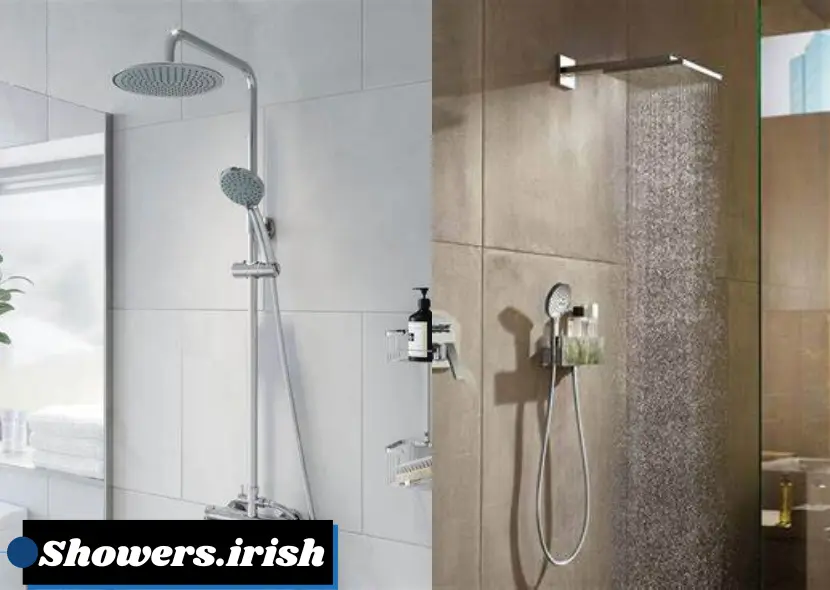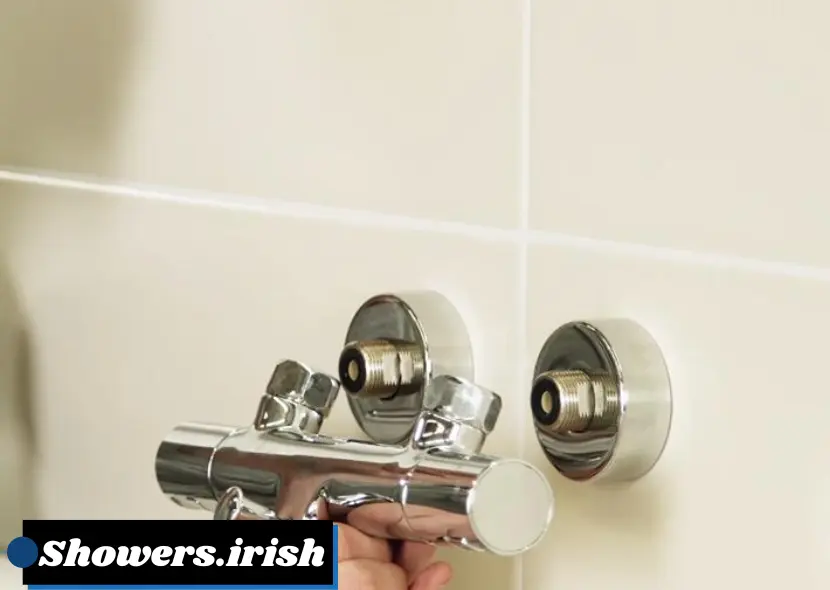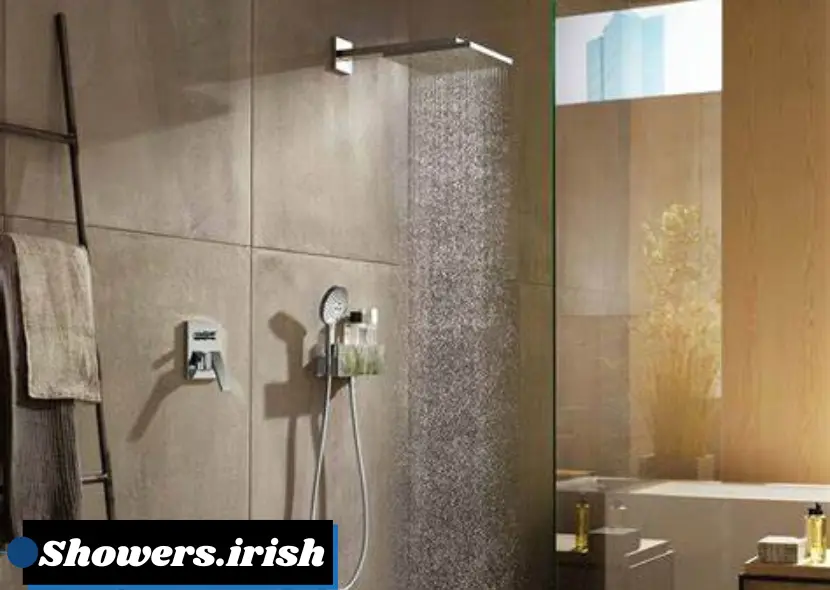Mixer showers are a popular choice for modern bathrooms due to their convenience and functionality. They offer a seamless way to control both the temperature and flow of water, providing a comfortable and customizable shower experience. In this article, we will delve into the mechanics of mixer showers, their types, advantages, installation, and maintenance. By the end, you’ll have a thorough understanding of how mixer showers work and how to make the most of them in your own home.
Understanding the Basics of Mixer Showers
Mixer showers combine hot and cold water to achieve your desired temperature. Unlike single-function showers, which only provide one type of water, mixer showers allow for precise control over both temperature and flow. This section will cover the basic components and functioning of mixer showers.
Components of a Mixer Shower
A typical mixer shower consists of several key components:
- Mixing Valve: This is the central component that blends hot and cold water. It ensures that the water temperature remains consistent during the shower.
- Shower Head: The outlet through which water is delivered. It can vary in design, from handheld options to fixed heads.
- Controls: These include knobs or levers that adjust the temperature and flow of the water.
- Pipework: Internal pipes deliver hot and cold water from the supply to the mixing valve and then to the shower head.
How Mixer Showers Blend Water
When you turn on a mixer shower, water flows from both the hot and cold supplies into the mixing valve. The valve has internal mechanisms that allow you to adjust the ratio of hot to cold water. This blend is then directed to the shower head at your desired temperature. Most modern mixers use ceramic disc technology for precise temperature control.
Benefits of Using a Mixer Shower
Mixer showers offer several benefits:
- Temperature Control: They allow for precise control over the water temperature, ensuring a consistent and comfortable shower.
- Water Efficiency: Mixer showers can be more water-efficient compared to some traditional setups because they are designed to optimize water flow.
- Aesthetic Appeal: Many mixer showers come in sleek and modern designs that can enhance the look of your bathroom.
Types of Mixer Showers
Mixer showers come in various designs and configurations, each offering different features and benefits. Understanding these types will help you choose the best option for your needs.

Manual Mixer Showers
Manual mixer showers require you to manually adjust both the temperature and flow of the water using separate controls. They are generally more affordable and offer straightforward operation, but they might lack the precision of thermostatic models.
Thermostatic Mixer Showers
Thermostatic mixer showers include a thermostat that automatically regulates the water temperature. This feature helps prevent sudden temperature changes due to fluctuations in water pressure or temperature. Thermostatic mixers are ideal for families with children or for anyone who values consistent water temperature.
Digital Mixer Showers
Digital mixer showers use electronic controls to manage temperature and flow. They offer advanced features such as pre-set temperature settings, touch-screen controls, and the ability to control the shower remotely via smartphone apps. Digital showers provide a high level of convenience and customization.
Power Showers
Power showers are designed for homes with low water pressure. They incorporate an integrated pump to boost water flow and pressure, ensuring a strong and invigorating shower experience. Power showers can be either manual or thermostatic, depending on your preference.
Installation and Maintenance
Proper installation and maintenance are crucial for the optimal performance of your mixer shower. This section covers the essential aspects of both.

Installing a Mixer Shower
- Preparation: Ensure that your plumbing system is compatible with the mixer shower you intend to install. Check that you have the necessary tools and fittings.
- Positioning: Decide on the location of the mixer shower and mark the positions for drilling. Make sure to consider the placement of the controls and the shower head.
- Connecting the Pipes: Install the mixing valve and connect the hot and cold water pipes. Ensure that all connections are secure to prevent leaks.
- Fitting the Shower Head: Attach the shower head to the mixer valve. Adjust the height and angle as needed.
- Testing: Turn on the water supply and test the mixer shower for leaks and proper operation. Adjust the temperature and flow settings to ensure everything is working correctly.
Maintaining Your Mixer Shower
- Regular Cleaning: Clean the shower head and controls regularly to prevent the buildup of limescale and soap scum.
- Check for Leaks: Periodically inspect the connections and pipes for any signs of leaks or damage.
- Descaling: Use descaling solutions if you notice limescale buildup, especially in hard water areas.
- Professional Servicing: If you encounter any issues or complex problems, consider hiring a professional plumber to perform maintenance or repairs.
Troubleshooting Common Issues
Mixer showers, like any plumbing fixture, can encounter problems. This section addresses some common issues and their solutions.

Inconsistent Water Temperature
If you experience fluctuating water temperatures, it could be due to a malfunctioning thermostat or an issue with the water pressure. Check the thermostat settings and ensure that the water pressure is stable. If the problem persists, consult a professional.
Low Water Pressure
Low water pressure can affect the performance of your mixer shower. This issue may be due to blocked pipes, a faulty pump (in the case of power showers), or issues with the water supply. Inspect the pipes for blockages and, if necessary, check with your water supplier.
Leaking Mixer Valve
A leaking mixer valve can result from worn-out seals or damaged components. To address this, turn off the water supply, disassemble the valve, and inspect the parts. Replace any damaged seals or components and reassemble the valve.
Conclusion
Mixer showers offer an excellent solution for precise temperature control and enhanced shower experiences. Understanding the basic components, types, installation, and maintenance of mixer showers can help you make an informed decision and ensure optimal performance.
Whether you’re considering installing a new mixer shower or maintaining an existing one, proper knowledge and care are key to enjoying a comfortable and efficient shower. If you’re interested in exploring further, consider reading about advancements in shower technology or consulting with a professional for personalized advice.
Frequently Asked Questions (FAQs)
1. How does a mixer shower blend hot and cold water?
A mixer shower blends hot and cold water through a central mixing valve. When you adjust the controls, the valve mixes the two water streams to achieve your desired temperature before delivering it to the shower head.
2. What are the different types of mixer showers available?
The main types of mixer showers are manual, thermostatic, digital, and power showers. Manual mixers require manual temperature adjustments, thermostatic mixers automatically regulate temperature, digital mixers use electronic controls, and power showers include a built-in pump for low water pressure.
3. Can I install a mixer shower myself, or do I need a professional?
While it’s possible to install a mixer shower yourself if you have plumbing experience, it’s often recommended to hire a professional plumber. They can ensure proper installation and avoid potential issues with leaks or water pressure.
4. How can I maintain my mixer shower to ensure it works efficiently?
Regular maintenance includes cleaning the shower head and controls to prevent limescale buildup, checking for leaks, and descaling as needed. If you encounter any persistent issues, consider professional servicing to address complex problems.
5. What should I do if my mixer shower has inconsistent water temperature?
Inconsistent water temperature may be caused by a faulty thermostat or unstable water pressure. Check the thermostat settings and ensure your water pressure is steady. If the problem continues, consulting a professional plumber might be necessary.
If you’re intrigued by the advancements in shower technology, you might want to explore the world of digital showers. Digital showers offer a modern twist on the traditional shower experience by using electronic controls for precise temperature and flow adjustments. They allow for easy customization, including pre-set temperatures and remote control options via smartphone apps. This can enhance your showering experience with added convenience and efficiency.
For more in-depth information on how digital showers work and the benefits they offer, check out this detailed guide: How Do Digital Showers Work?. This resource will provide you with a comprehensive overview of digital shower technology, helping you understand how it compares to other types of showers and if it might be the right choice for your home.
Feel free to share your experiences or ask questions about mixer showers in the comments below. Your feedback can help others make informed choices and enhance their showering experience!
Credit Website: www.ireland.ie/
